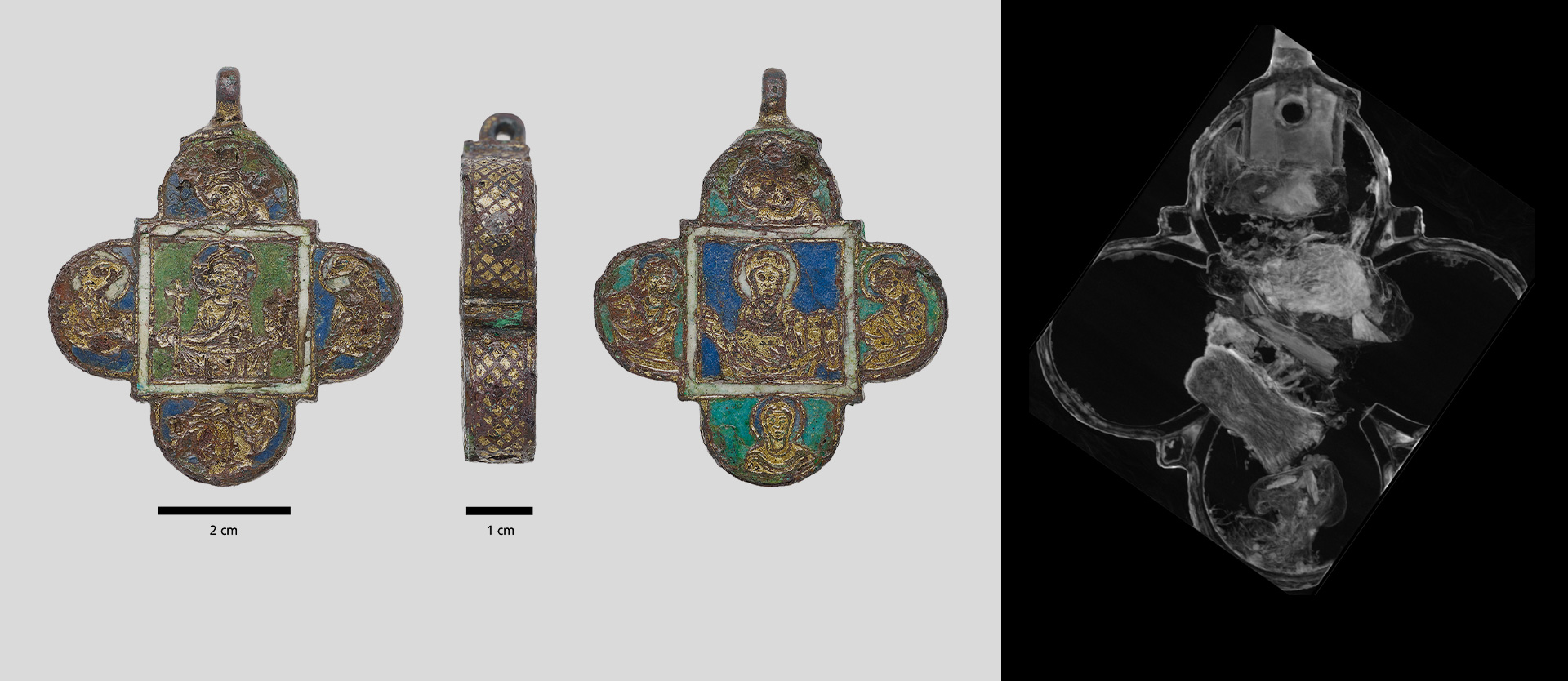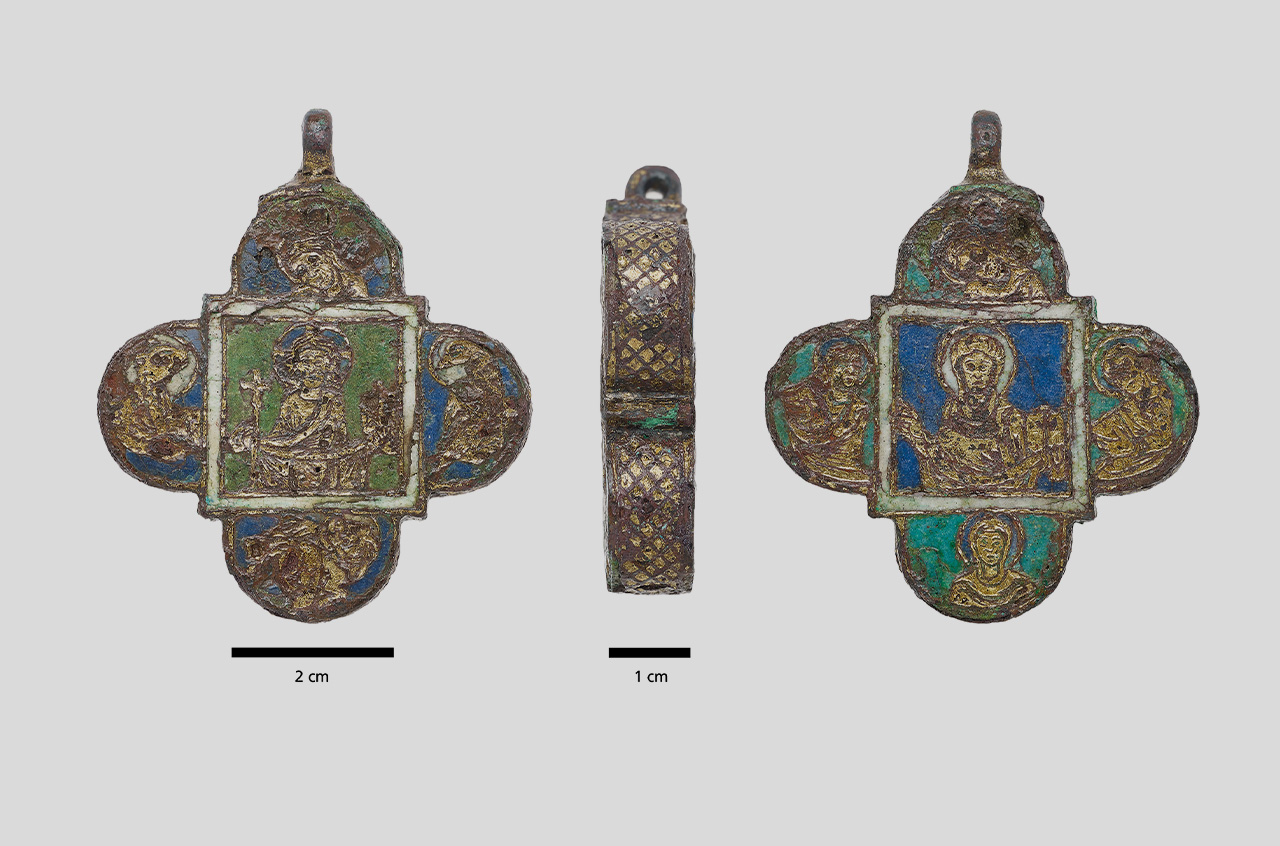
Hidden in gold jewelry

What cannot be seen from the outside must be made visible in another way. Normal light waves are out of the question. But neutron radiation, for example, can be used. Such neutron beams are generated at the Heinz Maier-Leibnitz research neutron source of the Technical University of Munich on the Garching research campus. They are suitable for special imaging. Unlike X-rays, for example, neutrons penetrate metals but make organic substances visible.

The restored reliquary. On the outside it is decorated with images of Jesus and Mary. Photo: Sabine Steidl / LEIZA
"The non-destructive examination with neutrons was very helpful because we couldn't just open the trailer and look inside. Centuries of corrosion have severely damaged the object and especially the locking mechanism. Opening it would have meant destroying it irrevocably," explains restorer Matthias Heinzel of LEIZA. Under neutron radiation, the richly decorated pendant revealed its secrets. Five individual packets made of silk and linen came to light during the evaluation of the tomographs. Bone splinters were packed in each of them.
Initial investigations revealed that the pendant, which was about six centimeters high and wide and one centimeter thick, was probably a storage container for relics. Since the organic contents of the object were not discernible on conventional X-ray images, the investigation using neutrons from FRM II came into play: Dr. Burkhard Schillinger from TUM performed neutron tomography on the ANTARES instrument, which made the individual textile packages with the bone fragments inside visible. "It is not possible to find out whether these are bones of saints. Usually, relic packets are accompanied by a strip of parchment on which the saint's name is written. But in this case, unfortunately, we can't see it," Heinzel explains.
Only three other reliquaries of this type, called phylacteries, are known to date. Phylactery translates from the Greek as custodial or protective. Their owners wore them on their bodies, usually around their necks. On the outside, the gilded copper pendant is enameled with images of Jesus, the four evangelists, Mary and four female saints. The researchers date it to the late 12th century and assign it to a workshop in Hildesheim.












